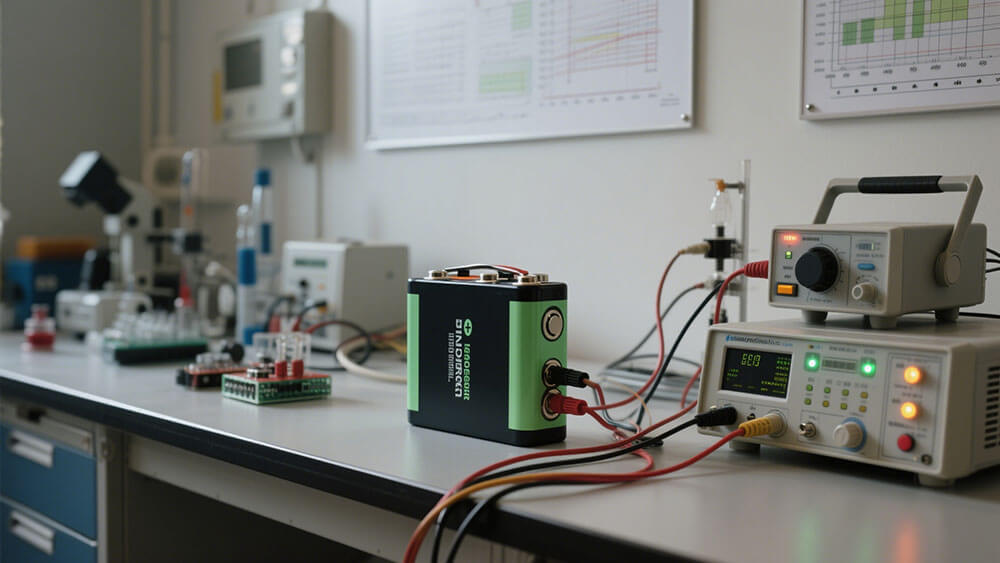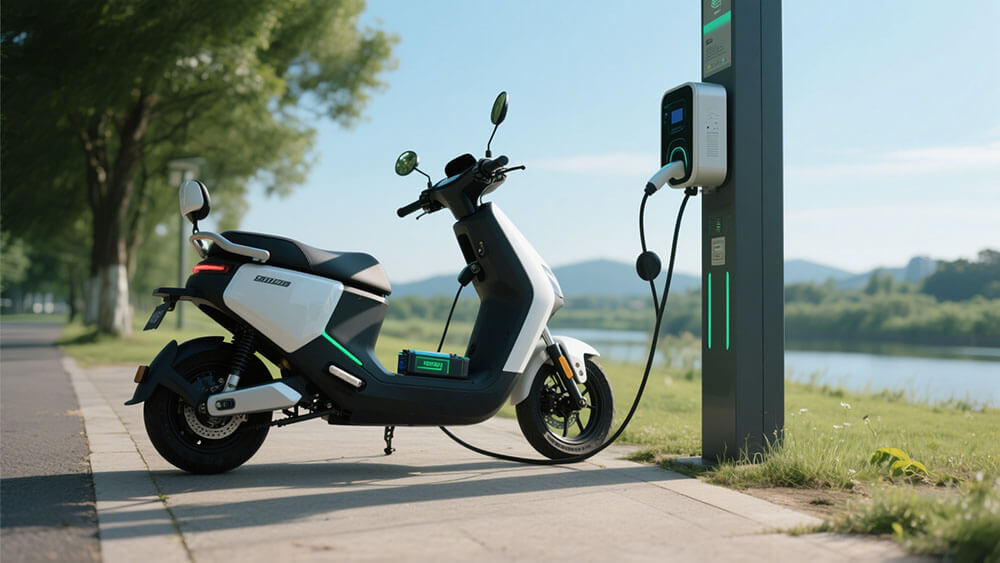Contents

Lithium iron phosphate batteries are renowned for their long lifespan, often lasting 5–10 years with proper care. These durable batteries, known for their rechargeable battery lasts long performance, can endure between 2,500 and 9,000 charge cycles, surpassing many other rechargeable battery types. Key factors such as charging cycles, storage conditions, and usage frequency significantly influence how long a rechargeable battery lasts. For example, extreme temperatures can negatively impact battery life, while high-quality materials contribute to their longevity. By understanding these factors, you can ensure your rechargeable battery lasts long and performs reliably over time.
Key Takeaways
-
Lithium iron phosphate batteries last the longest. They work for 5–10 years and up to 9,000 charges. These are great for things like solar energy storage.
-
Charging the right way helps batteries last longer. Keep charge between 20% and 80%. Avoid draining them completely to reduce wear.
-
Temperature is very important. Keep batteries in places between 15°C and 35°C. This stops damage and keeps them working well.
-
Store batteries the right way to keep them strong. Charge them to about 50% for long storage. Keep them in a cool, dry spot.
-
Take care of batteries often. Check for damage, clean the ends, and watch charge levels. This keeps them working well and lasting longer.
Key Factors Affecting How Long a Rechargeable Battery Lasts
Chemistry and Material Composition
The materials used in a battery play a crucial role in determining its lifespan and performance. For example, the choice of electrode materials, such as graphite for anodes and lithium cobalt oxide for cathodes, directly impacts energy storage capacity and stability. While lithium cobalt oxide offers high energy density, it tends to degrade faster than alternatives like lithium iron phosphate, which provides better stability and a long cycle life. Similarly, the electrolyte’s composition influences safety, performance, and cycle life. Organic electrolytes enhance ion movement efficiency during charging cycles but may decompose over time, reducing battery life.
Other components, like separators, also affect how long a rechargeable battery lasts. High-quality separator materials improve ion conductivity and resist mechanical stress, extending the battery’s cycle life. However, degradation mechanisms, such as side reactions and physical changes in materials, can shorten the lifespan. By understanding these factors, you can appreciate why some batteries last longer than others.
Charge and Discharge Cycles

Every time you charge and discharge a battery, it completes a cycle. The number of cycles a battery can endure before its capacity significantly decreases is known as its cycle life. Lithium iron phosphate batteries, for instance, can handle 2,500 to 9,000 cycles, making them ideal for applications requiring a long cycle life. In contrast, lithium-ion batteries typically last 500 to 1,500 cycles, depending on their usage and maintenance.
Frequent deep discharges can reduce a battery’s cycle life. To maximize battery life, you should avoid fully draining the battery and instead recharge it before it drops below 20%. This practice minimizes stress on the battery’s components, helping it maintain its performance over more cycles.
Operating Temperature
Temperature significantly affects how long a rechargeable battery lasts. Most batteries perform best within specific temperature ranges. For instance, lithium-ion batteries operate optimally between 15°C and 35°C (59°F to 95°F). Extreme temperatures, whether hot or cold, can harm the battery. High temperatures accelerate chemical reactions, causing faster degradation, while low temperatures may lead to lithium plating, which reduces efficiency.
To protect your battery, avoid exposing it to extreme conditions. If you live in a hot climate, consider using cooling systems for lithium-ion batteries. In colder regions, thermal insulation can prevent issues like electrolyte thickening in lead-acid batteries. Proper temperature management ensures your battery delivers reliable performance and a long cycle life.
Storage Conditions
Proper storage conditions play a vital role in ensuring your rechargeable battery lasts long and performs efficiently. Batteries degrade faster when stored in unsuitable environments, so following best practices can significantly extend their lifespan.
-
Smart Charging Practices: Keep the battery’s charge level between 20% and 80%. Avoid frequent fast charging, as it generates heat that accelerates degradation.
-
Temperature Management: Store batteries in temperature-controlled environments. Extreme heat or cold can damage internal components and reduce capacity.
-
Optimized Use: If the battery powers a device, moderate its energy discharge. For example, avoid high-drain activities that can strain the battery.
-
Battery Maintenance: Regularly check the battery’s health using its management system. Address any issues promptly to prevent further degradation.
When storing a battery for an extended period, aim for a charge level of around 50%. This practice minimizes stress on the battery’s chemistry. Additionally, keep the battery in a dry, cool place to avoid moisture-related damage. By following these guidelines, you can maximize the battery’s longevity and reliability.
Maintenance and Usage Habits
Good maintenance and usage habits are essential for extending the life of your rechargeable batteries. Simple practices can make a significant difference in their performance and durability.
-
Charge the battery when it drops to about 20%-30%. Avoid letting it drain completely before recharging.
-
Use a smart charger to prevent overcharging, which can generate heat and damage the battery.
-
Keep the battery cool by avoiding exposure to extreme temperatures. Heat accelerates chemical reactions, while cold can reduce efficiency.
-
If you don’t plan to use the battery for a while, store it at around 50% charge. This reduces stress on the battery’s internal components.
-
For lithium-ion batteries, partial charges up to 70% are ideal. In contrast, lead-acid and nickel-based batteries benefit from full charges but should avoid frequent partial charges to prevent heat buildup.
Regular use also helps maintain the battery’s health. Batteries left unused for long periods may lose capacity faster. By adopting these habits, you can ensure your rechargeable battery remains reliable and efficient for years.
Comparison of Battery Life Across Major Rechargeable Battery Types
Lithium Iron Phosphate Batteries (LFP)
Typical Lifespan
Lithium Iron Phosphate (LiFePO4) batteries stand out for their exceptional lifespan. They can last between 2,500 and 10,000 charge cycles, translating to 5–10 years of reliable performance. With proper care, these batteries can even achieve up to 6,000 cycles at 80% depth of discharge (DoD). This makes them ideal for applications requiring long-term durability, such as solar energy storage and electric vehicles.
Key Advantages and Disadvantages
|
Advantages |
Disadvantages |
|---|---|
|
Superior safety features |
Lower energy density than other lithium-based batteries |
|
Longer lifespan |
Higher cost compared to traditional batteries |
|
Environmentally friendly |
Lower voltage than other battery types |
LFP batteries also offer excellent thermal stability, making them safer in high-temperature environments. However, their lower energy density means they store less energy compared to lithium-ion batteries, which can be a drawback for compact devices.
Lithium-Ion (Li-Ion)
Typical Lifespan
Lithium-ion batteries generally last 2–3 years or 500–1,500 charge cycles, depending on usage and maintenance. While their lifespan is shorter than LFP batteries, they remain a popular choice due to their high energy density and lightweight design.
Key Advantages and Disadvantages
-
Advantages:
-
Lithium-ion batteries have the highest energy density among rechargeable batteries.
-
They are lightweight, making them suitable for portable electronics like smartphones and laptops.
-
Proper storage and charging practices can extend their lifespan significantly.
-
-
Disadvantages:
-
Capacity degradation occurs over time, especially with frequent deep discharges or high-current usage.
-
They are more sensitive to extreme temperatures, which can reduce their efficiency and lifespan.
-
Despite these drawbacks, lithium-ion batteries are versatile and widely used in consumer electronics and electric vehicles.
Nickel-Metal Hydride (NiMH)
Typical Lifespan
Nickel-metal hydride batteries typically last 1–2 years, with a lifespan of around 500–1,000 charge cycles. While their longevity is lower than lithium-based batteries, they remain a cost-effective option for many applications.
Key Advantages and Disadvantages
|
Benefit/Drawback |
Description |
|---|---|
|
High Energy Density |
NiMH batteries hold up to three times more energy than NiCd batteries. |
|
Affordability |
They are less expensive and widely available. |
|
Self-Discharge |
They lose charge over time, even when not in use, reducing performance. |
|
Voltage Depression |
Improper charging can lead to faster power loss and shorter lifespan. |
NiMH batteries are a good choice for devices like cameras and toys. However, their self-discharge rate and sensitivity to improper charging can limit their overall performance.
Nickel-Cadmium (NiCd)
Typical Lifespan
Nickel-Cadmium (NiCd) batteries typically last 1–2 years, with a cycle life ranging from 500 to 1,000 cycles. Compared to other rechargeable batteries, their lifespan is relatively short. For example, lithium-ion batteries can exceed 1,000 cycles, while nickel-metal hydride (NiMH) batteries offer a similar cycle life but last slightly longer.
|
Battery Type |
Lifespan (Years) |
Cycle Life (Cycles) |
|---|---|---|
|
NiCd |
1-2 |
500-1,000 |
|
NiMH |
2-3 |
500-1,000 |
|
Li-ion |
2-3+ |
>1,000 |
Key Advantages and Disadvantages
NiCd batteries offer several benefits, but they also come with notable drawbacks.
Advantages:
-
Durability: These batteries perform well in extreme temperatures, making them suitable for outdoor tools and equipment.
-
High Discharge Rate: NiCd batteries can deliver power quickly, which is ideal for high-drain devices.
-
Cost-Effectiveness: They are relatively inexpensive compared to other rechargeable batteries.
Disadvantages:
-
Memory Effect: Improper charging can cause the battery to “remember” a lower capacity, reducing its overall performance.
-
Toxicity: Cadmium is a hazardous material, making disposal and recycling challenging.
-
Short Lifespan: Their limited cycle life and rapid capacity loss make them less durable than modern alternatives.
NiCd batteries work well for specific applications, but their environmental impact and shorter lifespan often make other battery types more appealing.
Lead Acid
Typical Lifespan
Lead acid batteries generally last 3–5 years, depending on usage and maintenance. Despite their affordability, they have a shorter lifespan compared to lithium-based batteries. These batteries can only handle a limited number of charge cycles, and their performance declines significantly over time.
Key Advantages and Disadvantages
Lead acid batteries have been widely used for decades, but their design comes with both strengths and weaknesses.
Advantages:
-
Affordability: Lead acid batteries are one of the most cost-effective options available.
-
Reliability: They provide consistent power for applications like automotive starters and backup systems.
-
Ease of Recycling: Lead acid batteries are highly recyclable, reducing their environmental impact.
Disadvantages:
-
Limited Usable Capacity: These batteries can only utilize 30% to 50% of their stored energy before risking damage.
-
Inefficiency: Rapid energy consumption reduces their total energy output, and they waste about 15% of stored energy.
-
Slow Charging: The last 20% of charge can take up to 80% of the total charging time.
-
Bulky Design: Their size makes them less space-efficient compared to modern alternatives.
Lead acid batteries remain a practical choice for specific uses, but their limitations make them less suitable for applications requiring long-term durability or compact designs.
Pros and Cons of Each Battery Type in Relation to Battery Life

Lithium Iron Phosphate Batteries (LFP)
Lithium Iron Phosphate batteries excel in longevity and reliability. You can expect these batteries to last longer than most other types, thanks to their ability to endure thousands of charge and discharge cycles. Their durability makes them a dependable choice for applications like solar energy storage and electric vehicles.
Advantages:
-
Long Lifespan: These batteries handle more cycles, ensuring extended reliability.
-
Excellent Safety: High thermal stability reduces the risk of overheating or thermal runaway.
-
Environmentally Friendly: They lack toxic heavy metals, making them easier to recycle.
However, LFP batteries have a lower energy density compared to lithium-ion batteries. This means they store less energy for the same weight, which can limit their use in compact devices.
Lithium-Ion (Li-Ion)
Lithium-ion batteries are widely used due to their high energy density and versatility. They store more energy per unit of weight, making them ideal for portable electronics and electric vehicles. Their long cycle life ensures you can recharge them many times before noticing a decline in performance.
|
Advantage/Disadvantage |
Description |
|---|---|
|
High Energy Density |
Lithium-ion batteries store more energy per weight, perfect for portable devices and vehicles. |
|
Long Cycle Life |
They endure frequent recharging, maintaining performance over time. |
|
Low Self-Discharge Rate |
These batteries retain charge for long periods, ensuring readiness after idle periods. |
|
Sensitivity to Extreme Temperatures |
High or low temperatures can reduce their lifespan and efficiency. |
|
High Cost |
They are more expensive than other battery types, which may deter some users. |
|
Safety Concerns |
Prone to overheating and thermal runaway, requiring robust management systems. |
While lithium-ion batteries offer many benefits, their sensitivity to temperature and safety concerns make proper handling essential.
Nickel-Metal Hydride (NiMH)
Nickel-metal hydride batteries provide a balance between affordability and performance. They hold more energy than nickel-cadmium batteries, making them a better choice for devices like cameras and toys. However, their lifespan is shorter than lithium-based batteries, lasting around 500–1,000 cycles.
Advantages:
-
Higher energy density than nickel-cadmium batteries.
-
Affordable and widely available.
Disadvantages:
-
High self-discharge rate reduces their charge when not in use.
-
Improper charging can lead to voltage depression, shortening their lifespan.
NiMH batteries work well for low-cost applications but require careful charging to maintain their performance.
Nickel-Cadmium (NiCd)
Nickel-Cadmium (NiCd) batteries have been a reliable choice for decades. Their durability and ability to perform in extreme conditions make them suitable for specific industries. You’ll often find them in applications like emergency backup power for aircraft avionics, nuclear power plants, and mass transit systems. These batteries excel in environments where reliability is critical.
Pros and Cons of NiCd Batteries
Understanding the strengths and weaknesses of NiCd batteries helps you decide if they’re the right fit for your needs.
|
Pros of NiCd Batteries |
Cons of NiCd Batteries |
|---|---|
|
High energy density |
Memory effect |
|
Long cycle life |
Environmental concerns due to cadmium |
|
Wide operating temperature range |
Lower energy density compared to newer technologies |
|
Fast charging capability |
High self-discharge rate |
|
Reliable performance |
Heavier than modern alternatives |
NiCd batteries charge quickly and deliver consistent performance. However, their memory effect can reduce capacity if you don’t fully discharge them before recharging. Additionally, cadmium, a toxic material, poses environmental challenges during disposal.
Applications of NiCd Batteries
You’ll find NiCd batteries in industries requiring dependable power. Some common uses include:
-
Emergency backup systems in aircraft.
-
Lighting, HVAC, and signaling in mass transit equipment.
-
Critical systems in nuclear power plants.
While NiCd batteries offer reliability, their environmental impact and weight make them less appealing for modern consumer devices.
Lead Acid
Lead acid batteries are among the oldest rechargeable battery types. Their affordability and robustness make them a popular choice for automotive starters, backup power systems, and renewable energy storage. You’ll appreciate their reliability in applications where cost-effectiveness matters more than compactness.
Advantages and Disadvantages of Lead Acid Batteries
Lead acid batteries have clear strengths and weaknesses.
|
Advantages |
Disadvantages |
|---|---|
|
Cost-effectiveness |
Heavy and bulky design |
|
Established technology |
|
|
High discharge rates |
High self-discharge rate |
|
Recyclability |
Maintenance requirements |
|
Robustness |
Environmental concerns |
These batteries are easy to recycle and provide consistent power. However, their limited cycle life means you’ll need to replace them every three to five years. They also require regular maintenance to prevent performance issues.
Key Considerations for Lead Acid Batteries
To maximize the lifespan of lead acid batteries, you should avoid deep discharges. Only 30% to 50% of their energy is usable before risking damage. Additionally, the last 20% of charging takes significantly longer, which can be inconvenient in time-sensitive applications. Despite these drawbacks, their affordability and reliability make them a practical choice for many users.
Practical Tips for Maximizing Battery Life

Proper Charging Practices
Adopting the right charging habits can significantly extend your battery’s lifespan. Here are some essential tips to follow:
-
Charge lithium batteries to about 80% capacity instead of fully charging them. This reduces stress on the battery and prolongs its life.
-
Use slow charging whenever possible. Quick charging generates heat, which can degrade the battery over time.
-
Disconnect your device from the charger once it reaches full charge. Overcharging can lead to overheating and reduce the battery’s efficiency.
-
For lithium-ion batteries, aim for partial charges up to 70% rather than full charges.
-
Fully charge lead acid and nickel-based batteries when possible, but avoid frequent partial charges to prevent heat buildup.
Tip: Avoid using your device while it’s charging. This practice can cause unreliable charge readings and potential overcharging, which may harm the battery.
Avoiding Extreme Temperatures
Temperature plays a critical role in how long your battery lasts. Keeping your battery within a moderate temperature range ensures optimal performance.
Extreme heat accelerates chemical reactions inside the battery, which can permanently damage its components. On the other hand, extreme cold temporarily reduces capacity and may lead to lithium plating in lithium-ion batteries. Both conditions shorten the battery’s lifespan.
To protect your battery, avoid leaving it in direct sunlight or near heat sources. In cold environments, use thermal insulation to maintain a stable temperature.
Note: Batteries perform best between 15°C and 35°C (59°F to 95°F). Staying within this range helps prevent unnecessary degradation.
Storing Batteries Correctly
Proper storage is essential for maintaining your battery’s capacity over time. Follow these guidelines to store your batteries effectively:
-
Keep lithium-ion batteries at a state of charge (SoC) of around 40% to minimize capacity loss.
-
Store batteries in a cool, dry place. The ideal temperature is 15°C (59°F), but a range of -40°C to 50°C (-40°F to 122°F) is acceptable.
-
Recharge lead acid batteries when they drop to 70% SoC to prevent sulfation, which can block current flow.
-
Check stored batteries regularly to ensure they don’t deplete completely.
Tip: If you plan to store batteries for an extended period, avoid fully charging or fully discharging them. Moderate charge levels reduce stress on the battery’s chemistry.
Regular Maintenance and Monitoring
Regular maintenance ensures your rechargeable batteries perform efficiently and last longer. By adopting simple habits, you can prevent unnecessary wear and tear. Start by inspecting your batteries regularly for signs of damage, such as swelling or leakage. Damaged batteries can pose safety risks and should be replaced immediately.
Keep your batteries clean by wiping the terminals with a dry cloth. Dirt and corrosion can interfere with the connection, reducing performance. For rechargeable batteries like lead acid, check the electrolyte levels periodically. If the levels are low, refill them with distilled water to maintain proper function.
Monitoring the battery’s charge level is equally important. Avoid overcharging, as it generates heat that accelerates degradation. Use a smart charger to stop charging automatically when the battery reaches full capacity. For devices with built-in batteries, unplug them once fully charged to prevent overheating.
Store your batteries in a cool, dry place when not in use. Extreme temperatures can damage internal components, shortening their lifespan. If you plan to store a battery for an extended period, keep it at a partial charge of around 50%. This reduces stress on the battery’s chemistry and helps preserve its capacity.
Tip: Regular use also helps maintain battery health. Batteries left unused for long periods may lose capacity faster.
Choosing the Right Battery for the Application
Selecting the right battery type depends on your specific needs. Each battery type offers unique characteristics that make it suitable for certain applications. The table below highlights some common battery types and their features:
|
Battery Type |
Characteristics |
|---|---|
|
Non-Rechargeable Batteries |
Single-use, cannot be recharged, low self-discharge rate, suitable for household items. |
|
Rechargeable Batteries |
Can be recharged and reused, suitable for devices requiring frequent use. |
|
Common Types |
Alkaline, Zinc-Carbon, Silver-Oxide, Lithium (various types), Nickel Cadmium, Nickel-Metal Hydride, Lead Acid, Lithium-ion, Lithium Polymer. |
For devices like remote controls or clocks, non-rechargeable batteries work well due to their long shelf life. However, for gadgets requiring frequent power, such as smartphones or cameras, rechargeable batteries are a better choice. Lithium-ion batteries, for instance, offer high energy density and are ideal for portable electronics. On the other hand, lead acid batteries are more suitable for backup power systems due to their reliability and affordability.
Consider the operating environment as well. If you need a battery for outdoor tools, nickel-cadmium batteries perform well in extreme temperatures. For renewable energy storage, lithium iron phosphate batteries provide long-term durability and safety.
Note: Always match the battery type to the device’s power requirements. Using the wrong battery can reduce performance and even damage the device.
Lithium Iron Phosphate batteries provide the longest lifespan among rechargeable batteries. Nickel-Metal Hydride batteries follow closely, offering a reliable option for many applications. To ensure your rechargeable battery lasts long, focus on proper usage and regular maintenance. Avoid extreme temperatures, charge correctly, and store batteries in optimal conditions. These practices help extend battery life and improve performance. Always choose a battery type that matches your specific needs. This ensures you get the best value and functionality over time.
FAQ
What is the best way to store rechargeable batteries?
Store batteries in a cool, dry place at around 50% charge. Avoid extreme temperatures and direct sunlight. For lithium-ion batteries, keep them at 40–60% charge if storing long-term. Regularly check stored batteries to ensure they don’t fully discharge.
How can you tell if a battery needs replacing?
Look for signs like reduced capacity, swelling, or leakage. If the battery drains quickly or fails to hold a charge, it’s time to replace it. For safety, stop using damaged batteries immediately.
Can you overcharge a rechargeable battery?
Yes, overcharging can damage the battery and shorten its lifespan. Use a smart charger that stops charging automatically when the battery is full. Avoid leaving devices plugged in overnight to prevent overheating.
Do rechargeable batteries lose capacity over time?
Yes, all rechargeable batteries degrade with use. Factors like charge cycles, temperature, and storage conditions affect how quickly they lose capacity. Proper maintenance can slow this process and extend their lifespan.
Are fast chargers bad for batteries?
Fast chargers generate heat, which can degrade the battery over time. Use them sparingly to avoid reducing the battery’s lifespan. Slow charging is safer and helps maintain long-term performance.
Tip: Always follow the manufacturer’s recommendations for charging to protect your battery.





